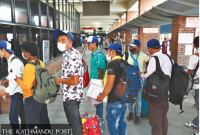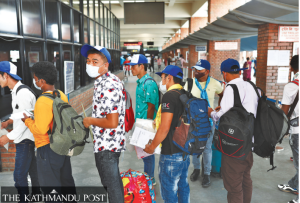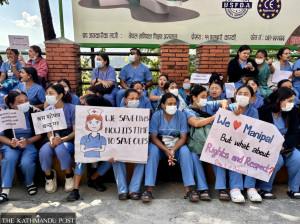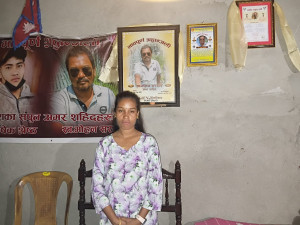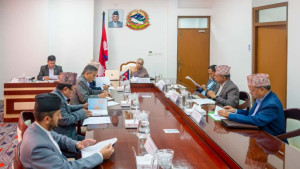Editorial
Unsmart decision
Administrative apathy is fatal than the infectious Delta variants of coronavirus.
Sixteen months into the pandemic, the Covid-19 Crisis Management Centre, a government apparatus set up to manage the Covid-19 situation, is hellbent on repeating the same mistakes over and over again. In an unsmart move that defies conventional scientific guidelines, the centre on Monday issued a circular to District Administration Offices throughout the country to enforce ‘smart lockdowns’. The centre also said Chief District Officers had been authorised to impose restrictions on public movement and other measures necessary to break the chain of transmission.
As the surge of new infections in the country drives hospital admissions that are nearing capacity, the Health Ministry has long warned that a third wave is inevitable mainly because of lax standard operating protocols and inadequate tests and contact tracing. But instead of focusing on preparedness and implementing science guided pandemic protocols, the Deuba administration has continued to assign an essential task of controlling the pandemic to a body composed mainly of security personnel and bureaucrats. That administrative apathy is fatal than the more infectious Delta variants of coronavirus cannot be overstressed. Over 10,000 people have succumbed to the pandemic, with dozens of deaths reported daily. Still, the government has failed to bolster its response mechanism, eroding public confidence and hurting the economy.
Nepal’s Covid-19 situation continues to be volatile, with a potentially lethal third wave just around the corner. The Covid-19 R-value continues to hover above 1. The Health Ministry reports 2,478 new infections on average each day. The more contagious Delta variants are the dominant strains in circulation, with 21 districts home to more than 500 active cases and 16 other districts host more than 200 active cases each. Kathmandu Valley continues to be the top hotspot in the country, reporting close to 1,000 cases or above each day. These are not acceptable levels to let everything run amok as if there is no pandemic for sure. A ‘smart lockdown’ has been in place ever since the second wave receded, but the figures in the daily situation report released by the ministry speak for themselves. The current measures are obsolete and beg for a scientific approach other than restrictive measures, which should be a final resort for the government. And suppose the country has reached that pandemic level. In that case, the government should communicate hard facts to the public, especially after conducting a nationwide serological study and vaccination campaigns targeting essential workers and the most vulnerable age group.
The ‘smart lockdown’, or so to speak, is questionable, as is the relevance of the centre that continues to impose them, citing substandard epidemiological data based on inadequate testing. Take the 8 pm deadline for public and private vehicles in the Kathmandu Valley while massive crowds throng marketplaces and temples, restaurants and businesses and packed public transport throughout the day, violating norms of physical distancing and indoor assembly. Is this the kind of ‘hard/mixed/soft/minimal’ lockdown that the Chief District Officers will replicate across the country in the days ahead? If so, the administration will continue to fail miserably and miss an opportunity to right the wrongs and change the course of our testing strategy. That said, ground data should guide pocket lockdowns where necessary, but without adequate testing and public health protocols, the country will never find a way out of the endless loop of lockdowns. The government should have known better than to make such an unsmart decision.




 17.12°C Kathmandu
17.12°C Kathmandu
